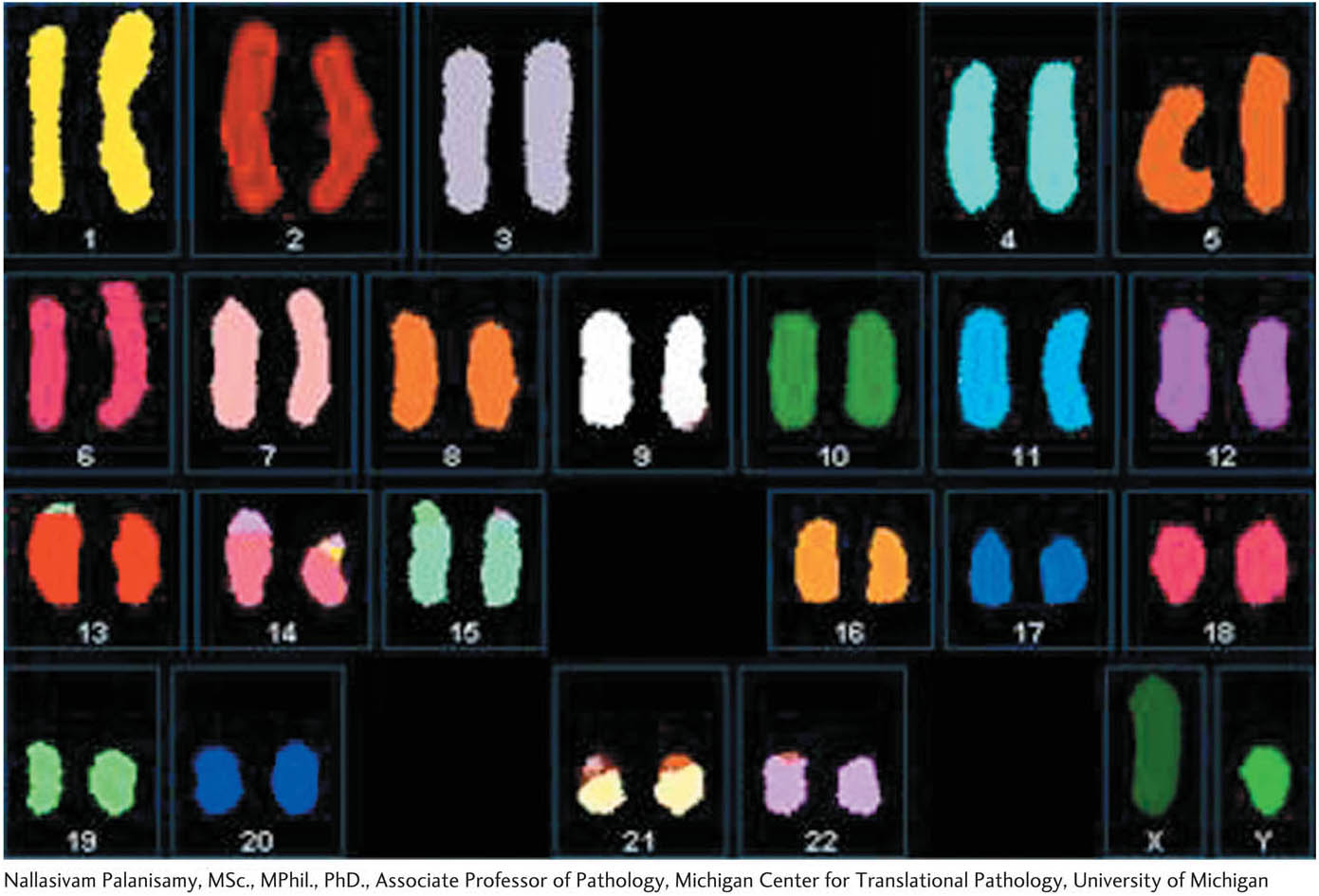Chapter Introduction
Genomes and Genomics
507
Genomes
and Genomics
CHAPTER
14
LEARNING OUTCOMES
After completing this chapter, you will be able to
Describe the combinations of strategies typically necessary for obtaining and assembling the complete DNA sequences of organisms.
List the functional elements within genomes, and explain how they are identified computationally and experimentally.
Compare whole-
genome and subgenomic approaches to personalized medicine. Describe how comparative genomics is employed to reveal genetic differences between species.
Explain how the availability of genomic sequence enables reverse genetic analysis of gene function.

OUTLINE
14.1 The genomics revolution
14.2 Obtaining the sequence of a genome
14.3 Bioinformatics: meaning from genomic sequence
14.4 The structure of the human genome
14.5 The comparative genomics of humans with other species
14.6 Comparative genomics and human medicine
14.7 Functional genomics and reverse genetics
508
In the summer of 2009, Dr. Alan Mayer, a pediatrician at Children’s Hospital of Wisconsin in Milwaukee, wrote to a colleague about the heartbreaking and baffling case of a four-
Neither Mayer nor any other doctors had ever seen a disease like Nicholas’s; they were unable to diagnose it, or to stem its ravages by any medical, surgical, or nutritional treatment. It was difficult to treat a disease that no one could identify. So, Dr. Mayer asked his colleague, Dr. Howard Jacob at the Medical College of Wisconsin, “if there is some way we can get his genome sequenced. There is a good chance Nicholas has a genetic defect, and it is likely to be a new disease. Furthermore, a diagnosis soon could save his life and truly showcase personalized genomic medicine.”1
Dr. Jacob knew that it would be a longshot. Finding a single mutation responsible for a disease would require sifting through thousands of variations in Nicholas’s DNA. One key decision was to narrow the search to just the exon sequences in Nicholas’s DNA. The rationale was that if the causal mutation was a protein-
As Jacob expected, they found more than 16,000 possible candidate variations in Nicholas’s DNA. They narrowed this long list by focusing on those mutations that had not been previously identified in humans, and that caused amino acid replacements that were not found in other species. Eventually, they identified a single base substitution in a gene called the X-linked inhibitor of apoptosis (XIAP) that changed one amino acid at position 203 of the protein—
509

Fortunately, the identification of Nicholas’s XIAP mutation suggested a therapeutic approach. The XIAP gene was previously known to have a role in the inflammatory response, and mutations in the gene were associated with a very rare but potentially fatal immune disorder (although not Nicholas’s intestinal symptoms). Based on that knowledge, Nicholas’s doctors boosted his immune system with an infusion of umbilical-
The diagnosis and treatment of Nicholas Volker illustrate the dramatic advances in the technology and impact of genomics—the study of genomes in their entirety. The long-
It is no hyperbole to say that genomics has revolutionized how genetic analysis is performed and has opened avenues of inquiry that were not conceivable just a few years ago. Most of the genetic analyses that we have so far considered employ a forward approach to analyzing genetic and biological processes. That is, the analysis begins by first screening for mutants that affect some observable phenotype, and the characterization of these mutants eventually leads to the identification of the gene and the function of DNA, RNA, and protein sequences. In contrast, having the entire DNA sequences of an organism’s genome allows geneticists to work in both directions—
Analyses of whole genomes now contribute to every corner of biological research. In human genetics, genomics is providing new ways to locate genes that contribute to many genetic diseases, like Nicholas’s, that had previously eluded investigators. The day is soon approaching when a person’s genome sequence is a standard part of his or her medical record. The availability of genome sequences for long-
The DNA sequence of the genome is the starting point for a whole new set of analyses aimed at understanding the structure, function, and evolution of the genome and its components. In this chapter, we will focus on three major aspects of genomic analysis:
510
Bioinformatics, the analysis of the information content of entire genomes. This information includes the numbers and types of genes and gene products as well as the location, number, and types of binding sites on DNA and RNA that allow functional products to be produced at the correct time and place.
Comparative genomics, which considers the genomes of closely and distantly related species for evolutionary insight.
Functional genomics, the use of an expanding variety of methods, including reverse genetics, to understand gene and protein function in biological processes.